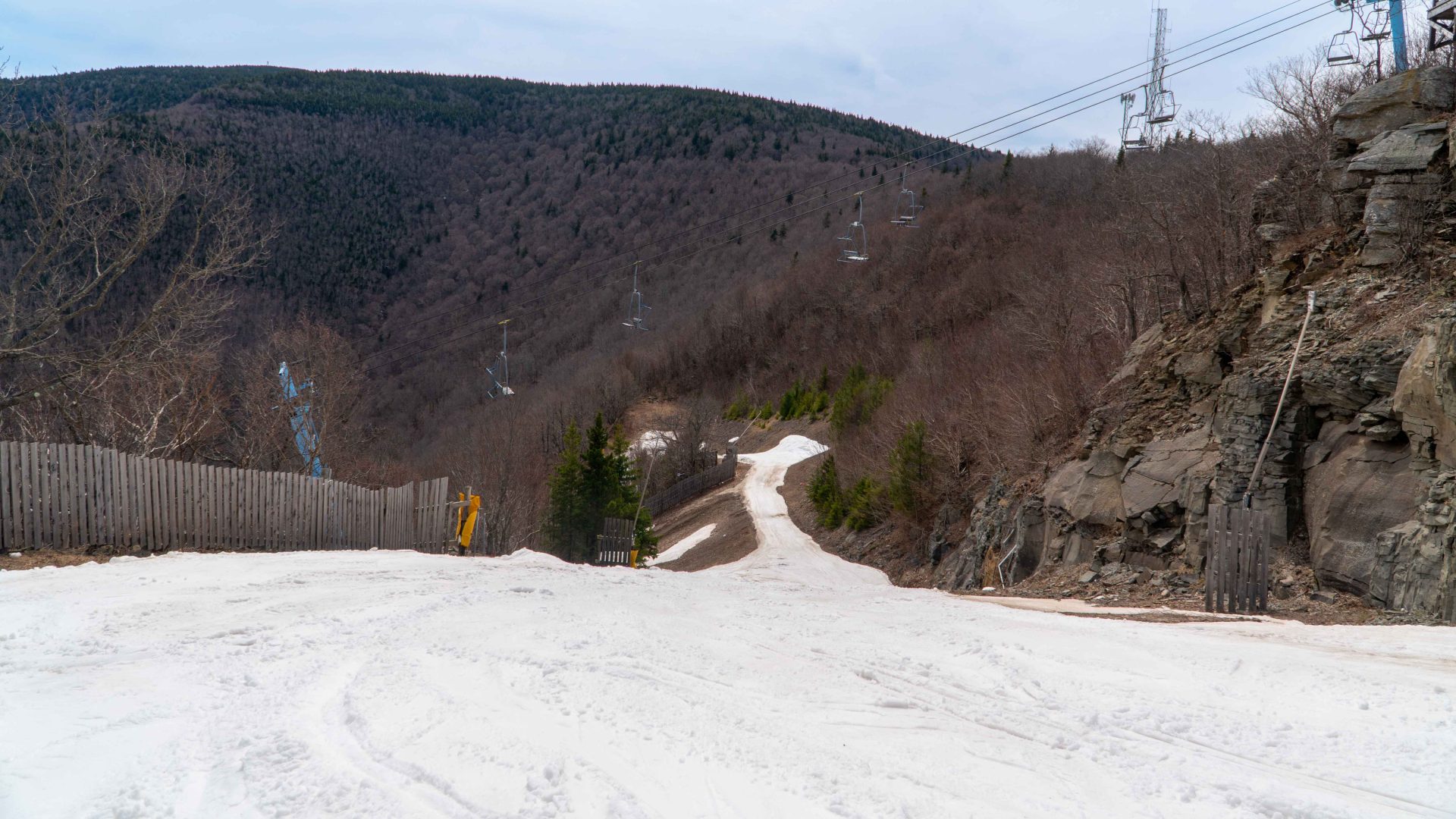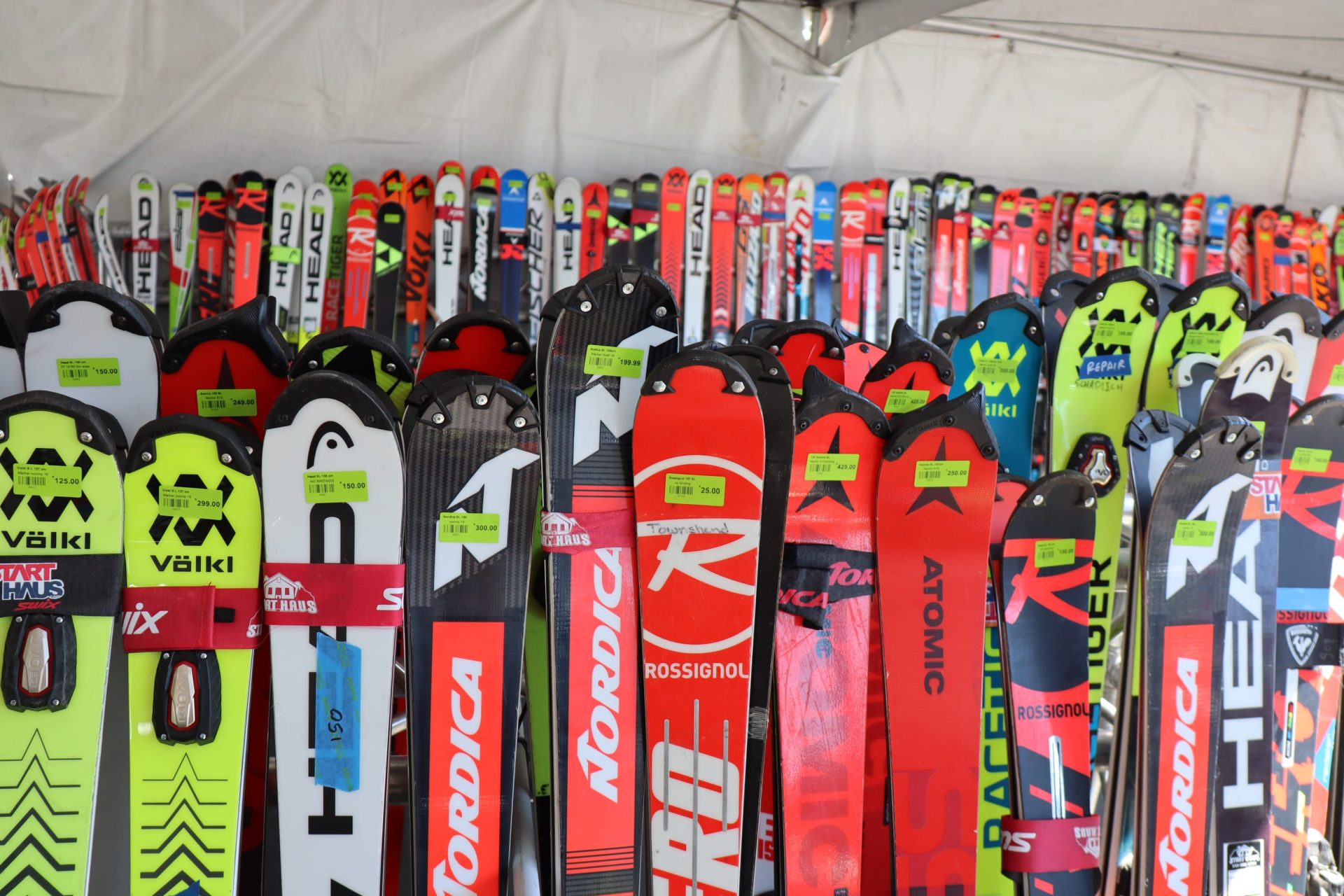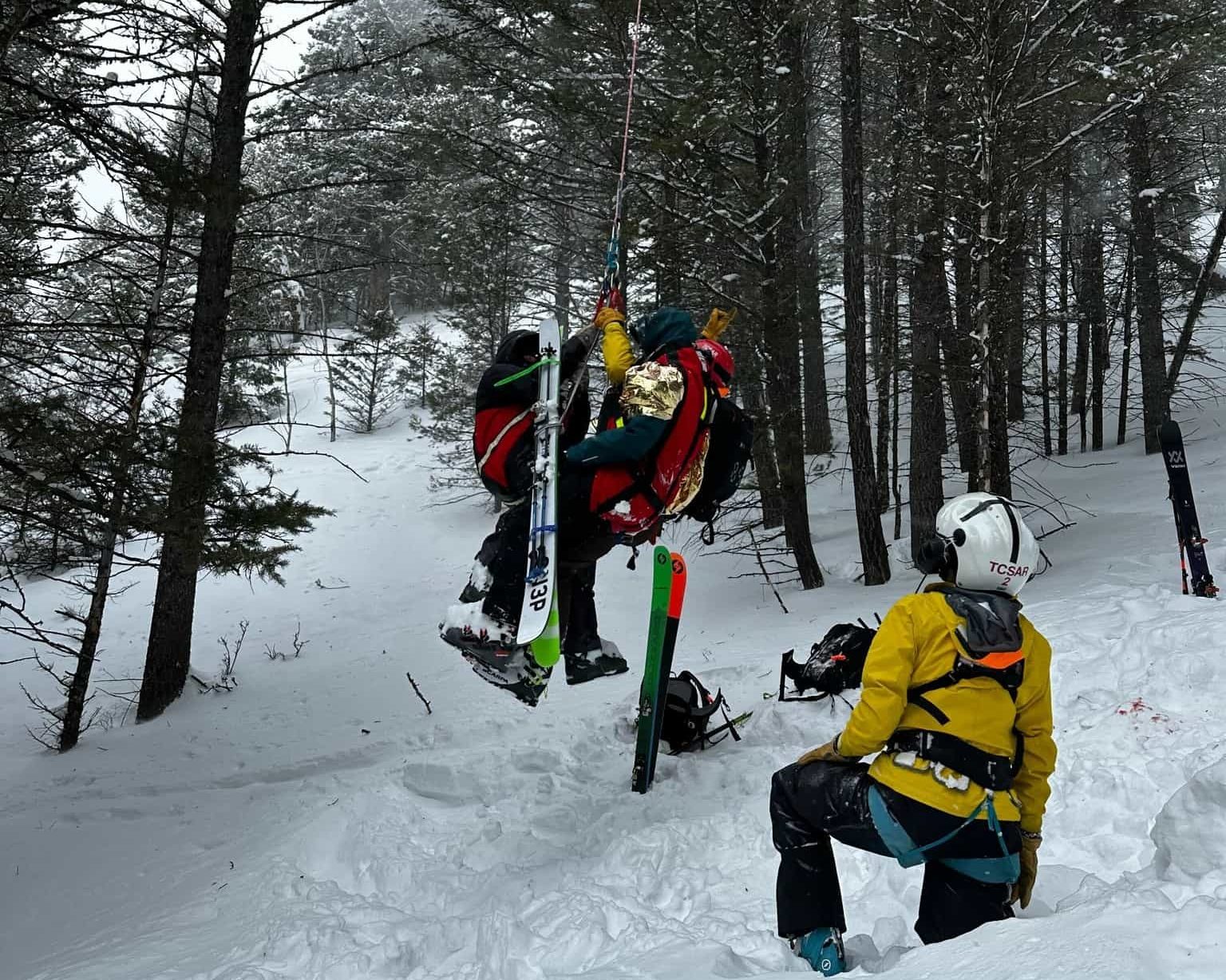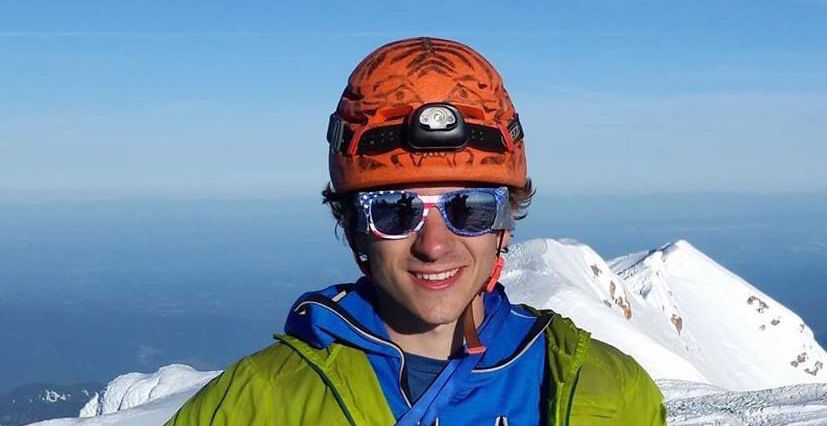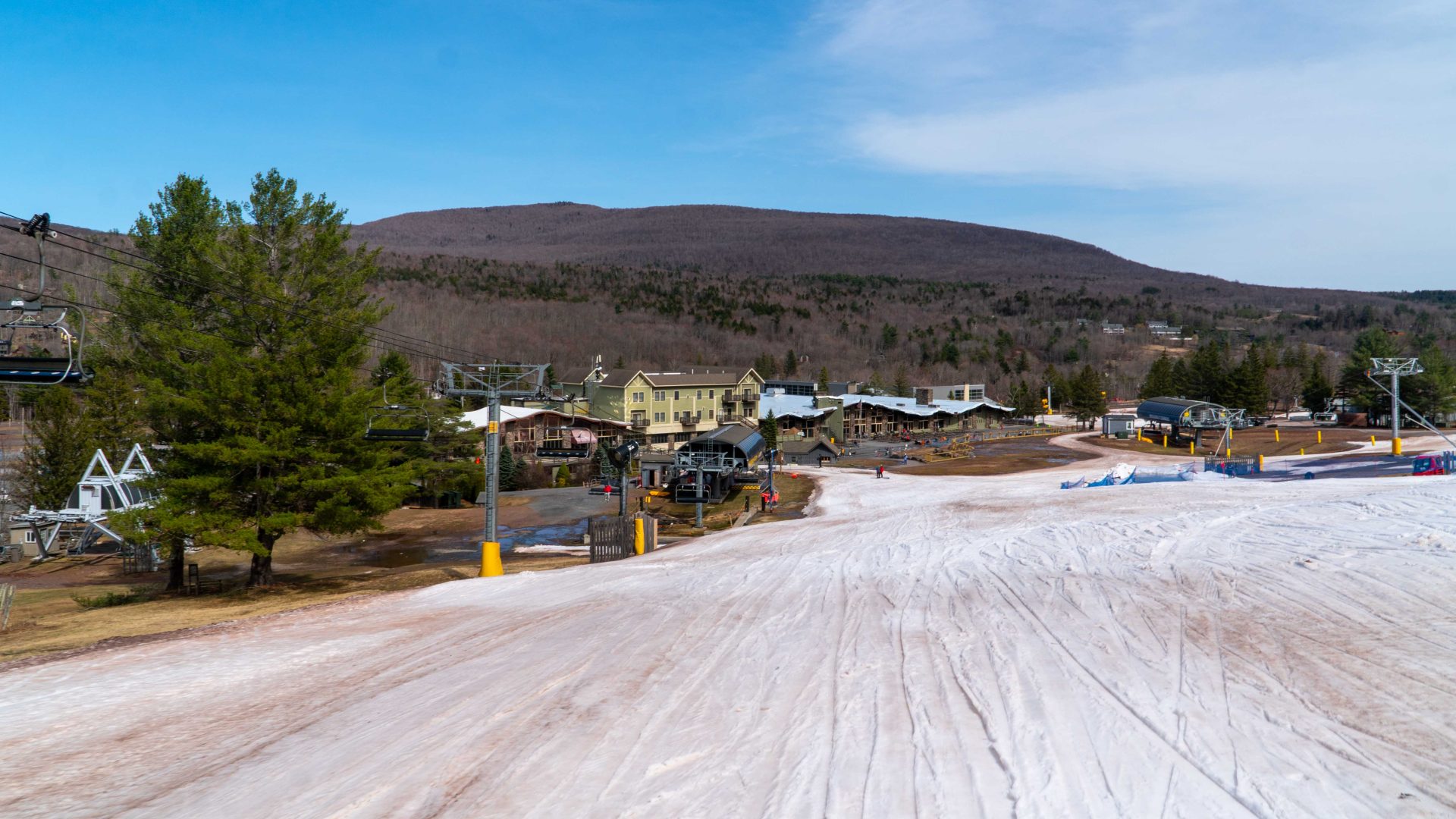
Every spring, skiers in the Northeast face the same reality: closing announcements start rolling in by April or May. Meanwhile, social media lights up with photos from out West, where lifts are still spinning into May or even June. Could year-round skiing ever become a reality in the Northeast? The short answer is: technically, yes—but it would take extreme conditions and major resources.
While it’s not impossible, year-round skiing in the Northeast would require massive financial investment, ideal terrain, and a lot of luck from Mother Nature—making it an unlikely scenario under current conditions. The idea, however, is intriguing: how much snow would a Northeast resort need to stay open year-round? Could future ski seasons involve man-made snowpacks in July—or is that pure fantasy?
Why year-round skiing in the Northeast is difficult
Calculating just how much snow it would take to cover the Northeast for year-long skiing involves a lot of science. The Northeast experiences significant variations in snowfall amounts and frequency depending on latitude, proximity to the coast, and elevation. Sustaining snow cover during the hotter summer months involves more than just piling it high—it’s a complex equation involving elevation, temperature, slope orientation, shading, and summer weather patterns.
To survive summer, a resort would need consistently low temperatures, minimal sunlight exposure, and an extremely deep snowpack. Even then, success would depend on minimizing melt through the hottest months. A crucial part of this scenario is having the least snowmelt possible during those months. If a ski resort started with a large enough base before summer, then, hopefully, the base amount would outlast the snowmelt until temperatures began to cool down again in the fall.
How much snow would it take?
Having enough snow to make it throughout the summer is the biggest challenge. Figuring out just how much snow it would take involves using scientific data and historical facts. The amount of snow required, according to a scientist, is mind-blowing. “At least 100 feet,” Steve Decker, the Director of the Meteorology Undergraduate Program at Rutgers University and Associate Teaching Professor in Atmospheric Science, said in an interview with SnowBrains. That’s 1,200 inches—nearly double what Alyeska Ski Resort, Alaska’s snowiest resort, received this season. Decker based his estimate on Boston’s historic 2015 winter, when the city received 110.6 inches of snow.
That year, Boston piled excess snow into the so-called “snow farm” in South Boston. The mound reached roughly 75 feet and lasted until July 14—four months after the last snowfall. Thoughts of another Ice Age happening come to mind when considering snow totals like that. “It would need to be in those kinds of conditions to be close to an Ice Age to get those totals,” Decker said.

Humans cannot create an environment where it is cooler than usual in the summer and the snow melts more slowly. Unfortunately for winter enthusiasts and ski resorts worldwide, that is a lesson only Mother Nature can teach. “I think in our current climate, we would need some assistance from Mother Nature in the form of a giant volcanic eruption,” Decker said. The idea of a volcanic eruption assisting in keeping snow from melting during the summer may sound absurd, but the science and facts behind it do not lie. “So, if you have enough ash, throw it up in the stratosphere, which can keep the temperatures down quite a bit, and maybe for at least a year, that could be the most plausible,” Decker added.
Such an even occured in 1815, when Mount Tambora in Indonesia erupted, triggered global climate changes. The following year was known as the ‘Year Without Summer,’ as clouds and ash blocked sunlight from reaching the Earth and dropped global temperatures by 2-7 degrees Fahrenheit. The effects were devastating across the globe. In New York, Massachusetts, New Hampshire, and Vermont, crops failed due to spring frost. In June, heavy snow smothered the ground in Albany, New York, and Dennysville, Maine, while frost persisted for five consecutive nights in Cape May, New Jersey. The relentless cold weather extended into late summer, which would have usually been harvest season. In July, lakes and rivers remained frozen as far south as northwestern Pennsylvania.
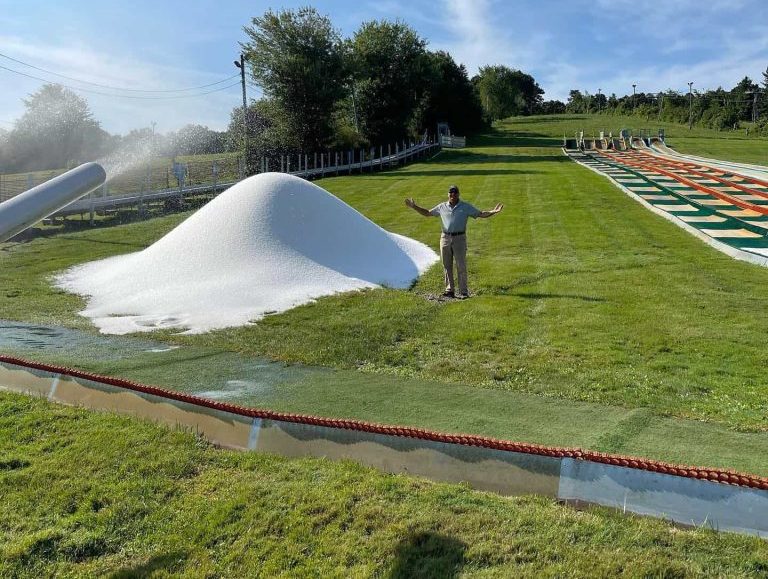
Can tech solve this?
Ski Ward in Massachussets is a place that does not need to wait for winter and cold temperatures to start snowmaking. Located about an hour west of Boston, Ski Ward uses a Latitude 90-L60, an all-weather snowmaking machine that can operate even in summer heat. According to Ski Ward, Latitude 90 can make “Pristine, fresh and non-compacted snow that is just like real snow, from -20 to +25°C (-4 to 77°F).” The Latitude 90-L60 can produce 120 cubic meters (156 cubic yards) of snow every 24 hours. The snowmaking unit has two outlets that can each blow snow up to 100 meters (328 feet) and is fully automatic and remotely controlled. Thanks to this technology, Ski Ward has been the first ski area to open in North America for the past two seasons.
Although the weather no longer limits Ski Ward from making snow, it does not operate year-round due to warm temperatures during the summer, because of a high snow melt rate that would not be cost-effective, according to Mikey LaCroix, Operations Manager at Ski Ward. “We’ve made snow in 85°F with that system, but you get to the point where the melt rate is so hard to keep up with that as soon as you push it out, you’re going to lose it very quickly,” LaCroix explained. Running snowmaking machines in the summer would be so costly that ticket prices would have to rise significantly just to break even.
LaCroix admitted that the whole ski area was not skiable; it was just the base and training areas for the first day of skiing on October 19. For Ski Ward to open in October, the snowmaking must begin in September. According to LaCroix, getting enough base depth for the teaching area to be skiable takes about a month. “The weather here is so volatile that we just have to make it work with what we’ve got,” LaCroix said. The overall goal is adequate snow coverage for the ski area and safety for their guests.
Could it ever happen?
“I think it might be possible to have one trail if you did something like Killington does, where you stockpile it up, farm it, keep it thick and shaded, and then push it out as needed. However, the amount of units and energy it would cost would be unforeseeable,” LaCroix said.
Making snow is one thing—keeping it on the trails in summer is another. The key is having enough depth to ensure safe skiing without bare patches. Ski Ward has some areas where the base is six feet deep, depending on the terrain, while other areas may only be a foot to two feet in depth. According to LaCroix, the average base depth in the winter is just over three feet. “No matter what you do, Mother Nature always has the final say. This [snowmaker] helps a lot, but we’ve learned over the years that it’s not only up to us,” LaCroix said.
Thanks to all-weather snowmaking systems like the one at Ski Ward, year-round skiing in the Northeast seems more feasible than ever before. But despite the promise of this technology, unpredictable weather, rapid melt rates, and enormous energy costs still make it more fantasy than fact. Until the climate changes dramatically—or Mother Nature intervenes—skiing in July will remain an occasional novelty, not a sustainable reality.
